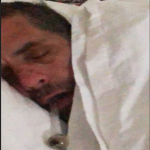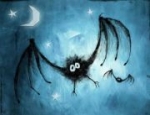Now that's a question I'm going to be able to answer some day. Pedroski noted the same thing on the pur-sleep thread way back when and I've asked him to weigh in here.Anonymous wrote:I am loving the Pur-Sleep just because of the scent and relaxation benefit, but I'm curious about those of you posting that your AHI is dropping.
I posted earlier that I had two really good nights, but my machine didn't pick up the data. I "think" I did better, but I couldn't get any numbers to prove it.
Last night I used the Peace (lavendar) fragrance, which is my fav. The data was picked up on my card this time. I was very happy! I had ONE apnea episode of 9 seconds. ONE! Zero Hypopneas. Now, I'm going to have to let this run out for a week or so to see if it is a lasting trend, but ONE apnea!
Is there a clinical reason that the use of EOs would lower AHI?
It might have something to do with the fact that lavender in particular has some interesting qualities with respect to sleep. The abstract from a recent human study states:
"Aromatherapy is an anecdotal method for modifying sleep and mood. However, whether olfactory exposure to essential oils affects night-time objective sleep remains untested. Previous studies also demonstrate superior olfactory abilities in women. Therefore, this study investigated the effects of an olfactory stimulus on subsequent sleep and assessed gender differences in such effects. Thirty-one young healthy sleepers (16 men and 15 women, aged 18 to 30 yr, mean±SD, 20.5±2.4 yr) completed 3 consecutive overnight sessions in a sleep laboratory: one adaptation, one stimulus, and one control night (the latter 2 nights in counterbalanced order). Subjects received an intermittent presentation (first 2 min of each 10 min interval) of an olfactory (lavender oil) or a control (distilled water) stimulus between 23:10 and 23:40 h. Standard polysomnographic sleep and self-rated sleepiness and mood data were collected. Lavender increased the percentage of deep or slow-wave sleep (SWS) in men and women. All subjects reported higher vigor the morning after lavender exposure, corroborating the restorative SWS increase. Lavender also increased stage 2 (light) sleep, and decreased rapid-eye movement (REM) sleep and the amount of time to reach wake after first falling asleep (wake after sleep onset latency) in women, with opposite effects in men. Thus, lavender serves as a mild sedative and has practical applications as a novel, nonphotic method for promoting deep sleep in young men and women and for producing gender-dependent sleep effects."
Goel, N., Kim, H., Lao, R.P.: “An olfactory stimulus modifies nighttime sleep in young men and women.” Chronobiology International 22:889-904, 2005.
















